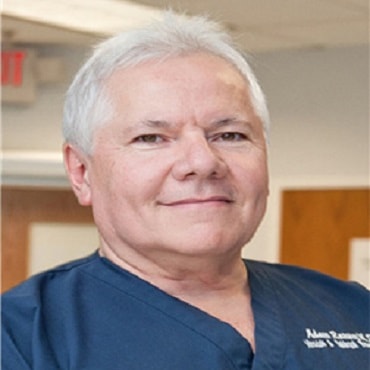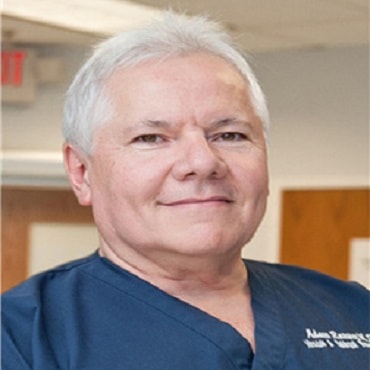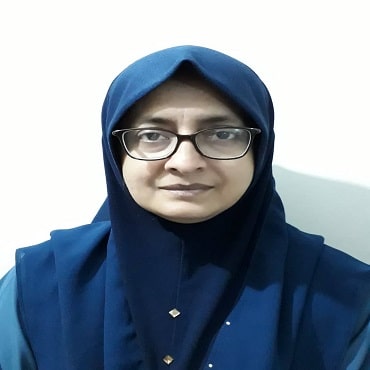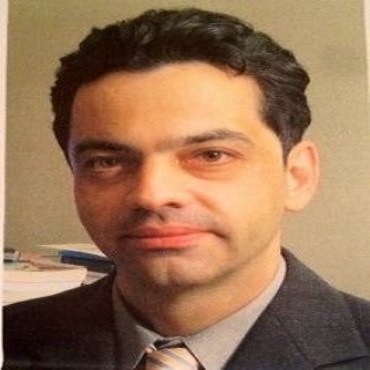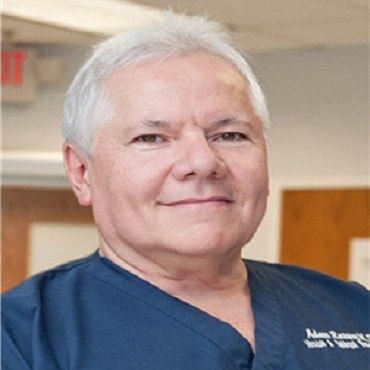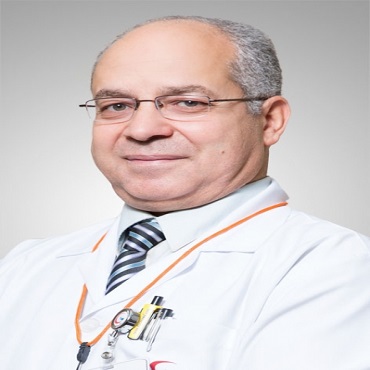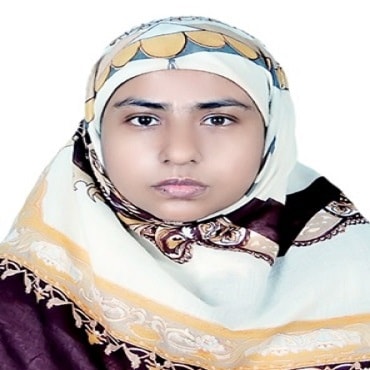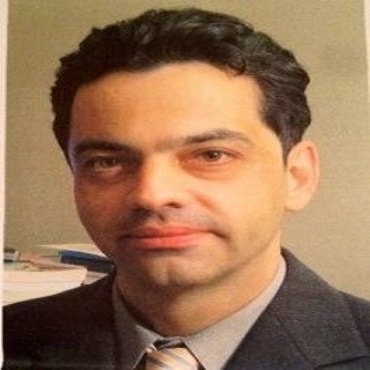Scientific Program
Keynote Session:
Title: Hormone therapy in urogynecology
Biography:
Adam Ramsey is Board Certified with the American Board of OBGYN. He is a Fellow of the American College of OBGYN, a Member of the Royal New Zealand College of OBGYN / Australian College of OBGYN, a Diplomate of OBGYN from Otago University, Dunedin, New Zealand and a Diplomate of Obstetrics with the Royal College of Physicians of Ireland. His teaching experience has expanded from his work as a Clinical Tutor from Canberra, Australia to teaching medical students at Sydney University, Australia, teaching the curriculum course of OBGYN and Urogynecology to Medical students at Midwestern University School of Medicine, Downers Grove, Illinois, USA and as an Assistant Professor in the Department of OBGYN at the North Chicago School of Medicine, Rosalind Franklin University, Chicago, Illinois, USA.
Abstract:
Urogenital embryonic development is so closely that both of the genital and lower urinary systems are hormonally dependent. Aging and hormonal deficiency will affect both parts equally, and disease and physiological as well as pathological disorders are hormonally influenced. Screening, investigating, and management of urogynecological/lower urinary tract disorders must take the hormonal influence in consideration as neither set of systems can be viewed in isolation. Many medical professionals make the mistake of only thinking of estrogen when talking about hormonal influences and therapy. Several hormones affect both urological and genital systems equally. The hormones include Estrogen, Progesterone, Testosterone, DHEA, Cortisol, Thyroid, Pregnenolone, and Melatonin. These hormones and their influences on the urogenital systems will be discussed. Clear evidence exists to support that recurrent urinary tract infection, urinary frequency, urinary incontinence, urgency, nocturia, as well as dysuria may influence hormonal imbalance as a precursor to these symptoms. This presentation will explore the causative relationship and the value of this enormous therapeutic benefit in the field of urogynecology, both in relation of dysfunctions of the lower urinary tract, and in the female genital organ prolapse.
Title: Vaginal dryness-An unspoken sorrow of menopause and beyond
Biography:
Shaikh Zinnat Ara Nasreen is now working as Professor and Head of Obs/Gyne department in ZHSwomen medical college & Hospital, Dhaka. She obtained MRCOG in 2000 and FRCOG in 2012 from Royal College, UK. She got her FCPS from BCPC and MPh from NS University Dhaka. She has more than 50 publications. She is secretary General of BMS, Joint Secretery of OGSB. She is also CAMS Representative IMS, and honorary Secretary General RCOG Representative Bangladesh.
Abstract:
Vaginal dryness may be the problem at any age but it occurs more frequently in women beyond menopause. 1 in 3 menopausal women suffers from vaginal dryness. The repercussion of these symptoms on quality of life needs treatment otherwise it becomes progressive. Intercourse becomes very painful (47%) leading disharmony in women’s life. Dyspareunea affects all the domain of female sexual function and associated with GMS. Irony is women are reluctant to share the problem, get embarrassed, suffer silently and feel ashamed without knowing restorative treatment. So doctors need to be proactive in asking this issue.Estrogen withdrawal in menopause causes thinning, narrowing,loss of elastic- collagen tissue, shrinkage of blood supply, decreases lubrication of vagina and dyspareunia. Diagnosis is straight forward. Investigations are done only to exclude the other causes. Treatment includes; General measure, Non hormonal therapy, Hormonal therapy, Alternative therapy. General Treatment includes maintenance of optimum bodyweight, regular exercise and quitting smoking. Nonhormonal therapy- Antidepressant, Gabapentine, SSRI, SNRI, SERM and Soya black cohosh, tafu, flaxceed all are also helpful. Probiotics, Vit D, Bioidentical Hormone, moisturizers are being used.-Hormonal therapy is evidence-based. Systemic estrogen is not sufficient to ameliorate of vaginal atrophy but local therapy is very helpful for symptoms relief. Ospemifene, DHEA, testosterone are effective, but Laser is most promising. Botox, G-shot are coming up. There is a significant unmet need for medical treatment of vaginal dryness. Women complain but that is just tip of the iceberg, we need to break the ice of unspoken sorrows of vaginal dryness.

Waleed Hamed Abdelbaky Aboelela
Alnile IVF centre and Almery centre for IVF and Advanced Endoscopic Surgery, Egypt.Title: Difficult hysteroscopy
Biography:
Waleed Hamed Abdelbaky Aboelela has completed her MD degree on 2017 from Al Azher University Hospitals. Also he has spent about 4 years training at ART Unit of the international Islamic centre for population studies and research University. Now He is serving as the medical Director of Alnile IVF centre and Almery centre for IVF and Advanced Endoscopic surgery. He also served as a Lecturer of obstetrics and gynecology department and director of endoscopy unit at Alazher University hospital (Assiut).
Abstract:
One of the most distressing situation in hystroscopy is tightly stenosed cervix. In many cases the hystroscopist will try to dilate it using uterine sound or hegar dilators which are completely risky as there is a possibility of creating a false passage. So considered a traumatic procedure. So, other steps to pass through this tight cervix. These steps will start by hydrodilatation and wait, hydrodilatation and twisting, hystroscopy with step forward and backward technique, hysrodilatation with twisting around scissor placed inside the uterine cavity hysrodilatation with gradually increasing hystroscpic diameter Using the hystroscopic scissor to dilate the pathway Vaginal misoprostol Hystroscpy during menses
Advantage of non-traumatic cervical dilatation: 1- Under vision, 2- No false passage, 3- No blood will spoil the endometrium so no pathology will be missed
Oral Session 1:
- ART (Assisted Reproductive Technology) | Urogynecology | Menopause | Maternal Fetal Medicine | Acute Hepatitis |Viral Hepatitis |Hepatitis C

Chair
Shaikh Zinnat Ara Nasreen
Z H Sikder Womens Medical college Hospital, Bangladesh

Co-Chair
A Ramsey
Unit of the Chicago Incontinence Center, USA
Title: Vitrification of oocytes and blastocysts: A simple, reliable and successful method of preservation
Biography:
Sofia Soto-Rodriguez started as an Embryologist in 2008 and was trained in vitrification directly by Dr. Masashige Kuwayama. In 2014, she became an Official Trainer of the Cryotech vitrification method in official Cryotech workshops at the most important meetings in the world. In 2015, she completed her PhD in Biomedical Sciences from University of Guadalajara, and since then she became the Research Director at Repro-Support Medical Research Center, supporter of Cryotech.
Abstract:
The demand of fertility preservation techniques has increased in the last decades, either because of health conditions or maternity delay. Nowadays the best option is the vitrification of oocytes and embryos, since it is a non-invasive technique, and avoids ethical, political and economic problems. Until recently, the open system of vitrification had been able to make 90% of human oocytes and embryos survive after freezing. The remaining 10% were sensitive patients over 40 years old or patients with a limited number of oocytes or fragile eggs, leading them to low or no chance of pregnancy. Besides, these techniques require very skilled manipulation and complicated protocols. The last challenge was to create an improved noninvasive vitrification method that gives possibilities to women in true difficulty and pain. The aim of this work is to present a very successful vitrification method for oocytes and blastocysts, together with the improvements made to the previous techniques, and show the results worldwide compared to fresh cycles. In this retrospective study we report patients undergoing IVF cycles during 2015-2017 with either oocyte or blastocyst vitrification in clinics worldwide. The modifications featured in this new technique yielded to a worldwide higher pregnancy rate (47% and 48%; n=4,673 and n=15,177 in oocytes and blastocysts respectively) compared to fresh cycles (39%; n=115,610; SART, 2016). These results are an evidence of the safety and effectiveness of this improved method. With this high survival rate and excellent clinical results, ordinary methods are becoming advanced in fertility facilities all around the world.
Title: Treatment of posterior compartment prolapses with and without grafts
Biography:
Adam Ramsey is Board Certified with the American Board of OBGYN. He is a Fellow of the American College of OBGYN, a Member of the Royal New Zealand College of OBGYN / Australian College of OBGYN, a Diplomate of OBGYN from Otago University, Dunedin, New Zealand and a Diplomate of Obstetrics with the Royal College of Physicians of Ireland. His deep passion for the field of Urogynecology first began with his Research Fellowship in Urodynamics Studies with patients suffering from Overactive Bladder Syndrome at Massachusetts General Hospital, Harvard Medical School, Boston, Massachusetts, USA in 1983. He is affiliated with the American Urogynecological Society (AUGS), The International Continence Society (ICS), and many other educational bodies. His teaching experience has expanded from his work as a Clinical Tutor from Canberra, Australia to teach medical students at Sydney University, Australia, teaching the curriculum course of OBGYN and Urogynecology to Medical students at Midwestern University School of Medicine, Downers Grove, Illinois, USA; and as an assistant Professor in the Department of OBGYN at the North Chicago School of Medicine, Rosalind Franklin University, Chicago, Illinois, USA. Currently, He speaks professionally, representing diverse medical industries and presenting in many conferences and clinical meetings around the world.
Abstract:
Objectives: To Describe the evaluation of posterior compartment defects. How to choose the surgical technique for your patient? Reiterate the evidence for the use or non-use of adjuvant grafts for repair of the posterior compartment.
Rectocoele: Prevalence POP 38-41%, Prevalence 12.9-18.6% (WHI), One of the most common gynecologic procedures, 40-69% of women undergoing PFD surgery, Prevalence expected to increase, Defect of the rectovaginal fascia.
Etiology of Rectocoele: During Valsalva (cough) the vagina becomes a high, pressure closed cavity due to BCM (bulbocavernousus) and PRM (puborectalis) reflex. Out of 23 women with rectocoele, 12 are healthy women, measured intra-vaginal, intra-rectal pressure, EMG responses and Decreased intravaginal pressure and longer latency of EMG response in women with rectocoele.
Treatment: Surgical repair, Management of constipation, Pelvic floor muscle therapy, Biofeedback, Balloon expulsion and Pelvic dyssynergia.
Title: New Tides - Updates in choosing hysterectomy routes for benign uterine disease
Biography:
Shamsun Nahar has completed her MS from BSMMU (Bangabondhu Sheikh Mujib Medical University), Bangladesh. She is the Professor & Head of dept of OB-GYN, Central Medical College, Bangladesh. She has published more than 25 papers in reputed journals & has been serving as executive editor of Central Medical College journal.
Abstract:
The present study was conducted by searching and reviewing the most recent medical literatures. Abdominal hysterectomy (AH) is the commonest route for surgical management of benign uterine disease that could be performed vaginally which has well-documented benefits. Abdominal hysterectomy (AH): vaginal hysterectomy (VH) is known to be 3:1. Evidence -Based Practice Guidelines for surgical management are defined by objective criteria - 'OUTCOME ' rather than subjective criteria - "Physician comfort, preference or experience ". But some gynaecologists remain reluctant to change their traditional “practice style” of performing hysterectomy abdominally giving priority to subjective criteria and ignoring objective criteria even without documenting vaginal route is contraindicated. Many publications confirm guidelines enable physicians to perform up to 90% hysterectomy vaginally, dramatically reversing AH: VH to 1:11. ACOG committee on gynecological practice recommended VH is the approach of choice whenever feasible. Laparoscopic hysterectomy (LH) is an alternative to AH when VH is not feasible or contraindicated. Standard guidelines recommended AH are reserved for documented serious disease. A Cochrane review of 34 randomised trials of VH, LH, AH (4495 patients) concluded VH has the best outcome. AAGL recommended surgeons without requisites training and skills for safe VH or LH should take the aid of trained & skilled collegues or refer to such surgeons. Training on different routes of hysterectomy has been emphasised during residency courses.
Title: Development and clinical validation of the Genedrive point-of-care test for qualitative detection of hepatitis C virus
Biography:
Laura Kemp completed her PhD in Biochemistry in 2014 from The University of Manchester. She is the IVD Trials Manager at Genedrive Plc. and has five year’s diagnostics experience.
Abstract:
We have developed a CE-IVD certified assay for the detection of HCV RNA in decentralised settings on the Genedrive® platform. The platform is an affordable, portable thermocycler that permits testing directly on plasma with results reported in less than 90 minutes, using ambient temperature stable assay reagents. To validate the Genedrive HCV ID Kit, we performed a three site retrospective clinical study on plasma and serum samples from Europe and Africa comparing Genedrive results with the Abbott RealTime platform as a benchmark. The assay is inclusive of all 6 major HCV genotypes, with a LoD of 2362 IU/ml (95% CI 1966 – 2788 IU/ml) in clinical specimens. Using 422 patients chronically infected with HCV and 503 controls negative for anti- HCV and HCV RNA, the Genedrive HCV assay showed 98.6% and 100% specificity to detect HCV. It was equally efficient on freshly collected or frozen plasma samples, and is exclusive of other BBV infections. Initial analysis indicates potential for viral semi-quantification through melting peak ratiometric analysis. Subsequent independent analysis of samples with HCV genotypes prevalent in Africa compared to Europe demonstrated 100% sensitivity and specificity. We report the clinical validation of a rapid affordable point of need HCV molecular test that meets the criteria decentralised HCV assays for use in low to middle income countries. The Genedrive HCV ID Kit is positioned to enable real-time treatment management of chronic HCV patients in decentralised settings.
Title: Diagnosis of liver disease through macroscopic analysis of the auricular pavilion assisting in the early treatment of chronic Hepatitis C
Biography:
Abstract:
Introduction: The Hepatitis C is one of the most important public health problems today due to the high proportion of chronic disease (about 80% of cases). The disease is usually asymptomatic, progressing slowly, producing cirrhosis in 20% of patients who harbor the virus for varying periods, and developing liver cancer, or needing a liver transplant.
Purpose: The idea is to demonstrate, using a case report, how the auricular pavilion can give us information of a possible liver disease in the patient, where it helped to diagnose hepatitis C.
Methods: Through a case report of a female patient of about 40 years which, were being treated because of an edema and fatigue by using acupuncture. In her physical exam, it was found a bulging in the area of the right and left ear, in the location corresponding to the area of the liver, according to the Auricular Acupuncture theory. We asked for laboratory exams, which confirmed she was carrying the hepatitis C virus. The PCR was the reagent for hepatitis C.Results: With this diagnosis, it was possible to make the conventional treatment with interferon plus ribavirin in the patient, who after 6 months of treatment, negative serology and CRP, remaining negative until today, 10 years after.Conclusion: The observation of the auricular pavilion can be a possibility of assisting the doctor to diagnose different pathologies, in this specific case, hepatitis C virus. The patient had the opportunity to have proper treatment, curing the disease, which could not happen without the Auricular diagnosis
Title: Effect of maternal age on ovarian reserve markers and pregnancy outcome in a sample of women in Erbil city, Iraq
Biography:
Manar Jabbar Hussein A specialist in obstetrics and gynecology and sub speciality in aesthetic gynecology Board degree in obstetrics and gynecology ( F. I. C. O. G. ) Master degree in aesthetic gynecology
Abstract:
Background and objective: The ovary has a biological age that does not always correspond to the chronological age; this may be of great importance for the evaluation of women reproductive outcome. This study aimed to determine the effect of maternal age on the pregnancy rate, and the ovarian reserve markers (antimullerian hormone, follicular stimulating hormone, and antral follicular count).Methods: A cross-sectional study was conducted in the in vitro fertilization center at the Maternity Teaching Hospital located in Erbil city, from January 1, 2015, to January 31, 2016. A convenience sample of 300 infertile women of different age groups was included in the study. Transvaginal ultrasound was conducted to determine antral follicular count, and blood test was done for determination of serum antimullerian hormone and follicular stimulating hormone. The study sample was divided into four age groups. Chi square test, ANOVA test, Pearson correlation, and logistic regression were used to determine the associations.Results: The biochemical pregnancy rate of the study population was 37% and the clinical pregnancy rate was 32%. The most common type of infertility among the studied sample was primary infertility (74%). Results showed a strong inverse significant correlation between antimullerian hormone and antral follicular count with age, but there was no statistically significant association between maternal age and serum follicular stimulating hormone.Conclusion: Maternal age is a significant factor that can affect ovarian reserve and causes ovarian aging. The pregnancy rate decreases with advanced maternal age. Keywords: Antimullerian hormone; Antral follicular count ; Female age; Ovarian reserve
Title: The Effects of Phaleria macrocarpa (Scheff.) Boerl Extract on Malondialdehyde level in Preeclampsia-induced HUVEC culture
Biography:
Simanjuntak L is a senior lecturer at Faculty of Medicine, Nommensen HKBP University, Medan, Indonesia in Department of Obstetrics and Gynecology. He has completed Master degree in Obstetrics and Gynecology at 2003 in Universitas Sumatera Utara. Now he is pursuing his PhD program at University Faculty of Medicine, Universitas Sumatera Utara, Medan, Indonesia.
Abstract:
Preeclampsia is a major cause of both maternal and perinatal mortality and morbidity. The pathopysiology of preeclampsia remain unclear but early placental dysfunction followed by oxidative stress, increased lipid peroxidation, and reduced antioxidants play an important role. Malondialdehyde (MDA) is the final product of lipid peroxidation, commonly used as the oxidative stress marker. Prevention and treatment of oxidative stress in preeclampsia using antioxidant including melatonin, beta-caroten, vitamin C or E has been developed but none is yet recommended. Thus the efforts are continuing to find an effective antioxidant in preeeclampsia. Phaleria macrocarpa, a medicinal plant has long been used traditionally and known has high antioxidant capacity by in vitro and in vivo studies. HUVEC culture is an in vitro model widely used to study the preeclampsia pathogenesis. This study aims to determine the effects of Phaleria macrocarpa extract on MDA level in preeclampsia-induced HUVEC culture. Our results showed the Phaleria macrocarpa’s extract reduce MDA level siginifcantly at concentration of 0.977μg/mL in preeclampsia-induced HUVEC culture and at 15.625μg/mL reduce MDA level to control normal level. Thus, Phaleria macrocarpa’s extract might be used as agent to overcome oxidative stress in preeclampsia.
Keynote Session:
Title: Modifying the caesarean: Seven years on
Biography:
Christos Tsitlakidis has graduated from Hellenic Aristotle University School of Medicine. He is a Consultant Obstetrician and Gynaecologist in Pinderfields Hospital, MidYorkshire NHS Trust, United Kingdom. He has published more than 6 papers in reputed journals in UK and abroad and has been member of the RCOG.
Abstract:
Introduction: Caesarean carries the legacy of an Emperor. It is the procedure that more than any other complicated by bleeding and infection. Modifying the procedure in several areas came out of necessity to respond to new challenges that appear over the last decades. Are we learning as fast as Midwifery changing, we should move to Modern Obstetrics, supporting ideas old and new ones, till we find those that work.Principles: Minimise the need for assistance, Create a clean and dry procedure, Eliminate bleeding, Operate in a controlled and calmed environment, Try and achieve natural birth simulation, Involve parents and Eradicate risk of postnatal infection.Methods: Materials required are Retraction tapes and large intrabdominal packs.1)Stage stitches onto the middle of the lower segment. 2)Use of suction to drain amniotic fluid. 3)Opening lower segment high and cutting slightly upwards laterally. 4)Fetal pillow to disengage head. 5)Kiwi cup for the high or low head. 6)Natural birth simulation and delay in delivery through tight incisions. 7)Invite the parental couple to observe, delivery straight to mother, delay cord clamp. 8)Repair of the lower segment in one of four appropriate ways, one applies additional compression. 9)Cleaning scar with normal saline and vaginal toilet with antiseptic.Conclusion: Caesarean still remains a ferocious procedure that can claim lives. Should we do not recognize the challenges from a changing world, the furies could become the Nemesis of our practice. Let’s credit the future with success.
Title: Painful bladder syndrome/chronic pelvic pain
Biography:
Adam Ramsey is Board Certified with the American Board of OBGYN. He is a Fellow of the American College of OBGYN, a Member of the Royal New Zealand College of OBGYN / Australian College of OBGYN, a Diplomate of OBGYN from Otago University, Dunedin, New Zealand and a Diplomate of Obstetrics with the Royal College of Physicians of Ireland. His deep passion for the field of Urogynecology first began with his Research Fellowship in Urodynamics Studies with patients suffering from Overactive Bladder Syndrome at Massachusetts General Hospital, Harvard Medical School, Boston, Massachusetts, USA in 1983. He is affiliated with the American Urogynecological Society (AUGS), The International Continence Society (ICS), and many other educational bodies. His teaching experience has expanded from his work as a Clinical Tutor from Canberra, Australia to teach medical students at Sydney University, Australia, teaching the curriculum course of OBGYN and Urogynecology to Medical students at Midwestern University School of Medicine, Downers Grove, Illinois, USA; and as an assistant Professor in the Department of OBGYN at the North Chicago School of Medicine, Rosalind Franklin University, Chicago, Illinois, USA. Currently, He speaks professionally, representing diverse medical industries and presenting in many conferences and clinical meetings around the world.
Abstract:
Objectives: Key treatments of IC, Antidepressants, Gabapentin, Intravesical therapy, Pentosan polysulfate, Neuromodulation, Sexual dysfunction in the IC patient-pathogenesis and treatment strategies.Introduction: Challenge to diagnose “Traditional” view recognizes patients with end-stage disease, A continuum, rather than a “fixed” disease, Confused with other GU or GYN disorders.Clinical Picture of Interstitial Cystitis: Urgency, frequency, nocturia, chronic pelvic pain (CPP), Pain associated with sexual intimacy +/- incontinence, Negative culture and sensitivity. Estimated prevalence of self-reported IC in women is 1.5 million. IC is often misdiagnosed or underdiagnosed, 38% of women scheduled for laparoscopy for suspected endometriosis were cystoscopically confirmed to have IC. IC may be a common cause of Chronic Pelvic Pain (CPP), 80% to 85% of women with CPP of unidentified etiology shown to have pain of bladder origin.Principles of Treatment: Multimodal, Dietary guidelines, Stabilize the urothelium, pentosan polysulfate, Modulate neural activity, Tricyclic antidepressants like amitriptyline, gabapentin, Botox Therapy, Stabilize mast cells, Antihistamines, ex. Hydroxyzine, Stabilize the pelvic floor and sacral neuromodulation.
Title: Selective devascularization and conservative management in adherent placenta to save the uterus
Biography:
Hamdy Mohamed Talkhan is serving at General Organization of Teaching Hospitals, Egypt since 1993to till date. He has graduated from Al Sahel Teaching Hospital, and worked as Resident until Assistant Professor Obstetrics & Gynecology. He has been the Trainer and Examiner in Egyptian Board – Ob-Gyne. From 2008 – 2009, he was the Consultant & Head of OB-Gyne Department Mwasat Al-Jubail Hospital. From 2009 – 2014, worked as Consultant & Head of OB-Gyne Department of Prince Fahd Bin Sultan Hospital. Presently he is the Consultant & Head of OB-Gyne Department , GAMA Hospital since 2014 .
Abstract:
Introduction: Placenta accreta is a major challenge facing obstetricians nowadays owing to increased incidence of placenta accreta parallel to increased Caesarean Section rates. Although the age of patients with placenta accreta getting younger and fertility preservation is required, there is no definite planned management method widely accepted except for hysterectomy. Uterine sparing techniques were developed to prevent poor sequalae of hysterectomy but neither one methods proved to be superior to the other nor got wide acceptance by obstetricians and hysterectomy remains the most popular and accepted method for placenta accreta management as it minimize maternal morbidity and mortality.Aim of the study: The aim of this study is to put the light on Uterine Sparing techniques aiming to preserve future fertility and, minimizing the poor sequalae of hysterectomy.Patients and methods: 20 patients with abnormal adherent placenta previa varies between accreta, increta and percreta was managed in our hospital (Gama Hospital- Alkhobar, KSA) at the period from January 2017 to may 2018. Most of them were referred to us from other hospitals and medical centers. Conservative methods and selective devascularization was done for all cases after evaluation.Results: conservative methods and selective devascularization was succeeded to preserve the uterus and fertility for 19 cases but one case we obliged to do cesarean hysterectomy after failure of our management.Conclusion: uterine sparing techniques getting world wide acceptance and applicability in cases of abnormal adherent placenta specially to preserve fertility. Our technique is selective devascularization by ligation of internal iliac and ovarian arteries bilaterally, modified b lynch suture and condum catheter insertion intrauterine.
Title: Study on clinical profile and Feto-Maternal outcome of severe pre-Eclampsia
Biography:
Huang Wei Ling has graduated in medicine in Brazil, specializing in infectious and parasitic diseases, a General Practitioner and Parenteral and Enteral Medical Nutrition Therapist. She is the owner of the Medical Acupuncture and Pain Management Clinic.
Abstract:
Introduction: Autoimmune Hepatitis (AIH) occurs when the Liver is attacked by immune cells that mistake it for foreign tissue or pathogen, causing inflammation. Treatment with prednisone is generally used initially and a second medication, azathioprine may be recommended as well. Prednisone, especially when taken long term, can cause a wide range of serious side effects, including diabetes, thinning bones (osteoporosis) and osteonecrosis. Most people need to continue taking the prednisone for at least eighteen to twenty-four months, and many remain on it for life. The disease often returns if the drug is discontinued. In Traditional Chinese Medicine (TCM), Yin deficiency plays a central role in Autoimmune Disease. Purpose: The purpose of this study is to demonstrate that Autoimmune Hepatitis can be treated without the use of corticosteroids or immunosuppressive drugs. Methods: A case report of a female patient who had severe headache in the parietal region, as a symptom. According to TCM, this region corresponds to Liver meridian disharmony. Auricular acupuncture sessions were started, as well as dietary counselling according to the teachings of TCM. Laboratory tests revealed low prothrombin time and the presence of antinuclear antibody. Results: After one month of treatment, the exams were repeated and the antinuclear antibody was negative. Conclusion: The conclusion of this study is that Autoimmune Hepatitis can be treated without the use of corticosteroids and Immunosuppressive drugs according to the teachings of Traditional Chinese Medicine, reducing the side effects caused by these drugs.
Title: Study on clinical profile and Feto-Maternal outcome of severe pre-Eclampsia
Biography:
Yasmin Akhter has completed FCPS (Obstetrics & Gynaecology) in 2017 from Bangladesh College of Physician& Surgeons (BCPS) and MBBS from Z.H. Sikder Womens Medical College & Hospital, Dhaka, Bangladesh in 2002. She also completed her professional internship completed in 2003. She is presently working as a Registrar in department of Obstetrics & gynaecology at Mamata Maternity Clinic, Bandartilla, Ctg, Bangladesh. She has been served as an Assistant Registrar, Department of Obstetrics & Gynaecology in 2010.
Abstract:
Pre-eclampsia is a serious medical condition if left untreated can develop into eclampsia, which is yet a left threatening complication. It remains one of the most common reasons for women to die during pregnancy in developing countries like Bangladesh. A total of 50 patients suffering from severe pre-eclampsia were studied to find out the relationship and risk factors among age, parity, antenatal care and mode of delivery in department of obstetrics and gynaecology of Bangabandhu Sheikh Mujib Medical University, Dhaka, Bangladesh, during the period of study, September 2013 to March 2014. Prospective type of cross-sectional study was done on pregnant women with severe pre-eclampsia in labour and in antenatal ward admitted in the hospital during the study period. In the present study, Majority of pre-eclamptic patients in this study was found to be primigravida (60%) and only 40% of the patients were multigravida with age ranging between 15-35 years. A positive family history of hypertension (48%) was found in patients with severe pre-eclampsia. Most of the patients (66%) had no regular antenatal care, only 22% of patients received regular antenatal care. Various symptoms of severe pre-eclamptic patients were studied which revealed swelling of both leg was the most common symptom of all patients (78%), headache(34%), epigastric pain (30%), insomnia (26%), blurring of vision (18%), oliguria (6%). Obstetrical intervention was observed, showing greater incidence of caesarean section (70%) in comparison to vaginal delivery (22%) in severe pre-eclamptic patients. Overall outcome of neonates showed as healthy, premature, intra-uterine growth retardation (IUGR), stillbirth, and neonatal death as 52%, 18%,12%,10%,8% respectively. Pre-eclampsia contributes to high mortality and morbidity of both mother and the neonates in our country. Therefore, proper health education and regular antenatal care must be provided to all pregnant women in order to prevent and screen pre-eclampsia. Measures must be taken to control this condition through Behavioral Change Communication (BCC) regarding antenatal care, danger signs, delivery plan, involving both private and public awareness.
Oral Session 1:
- Poster Presentations
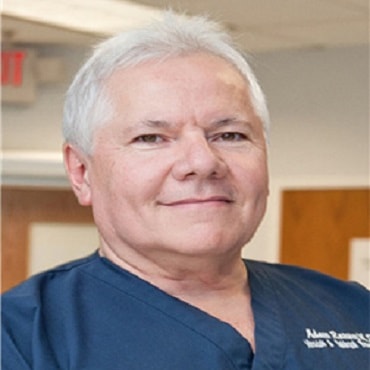
Chair
A Ramsey
Unit of the Chicago Incontinence Center, USA
Title: Prevalence and risk factors of symptomatic pelvic organ prolapse in Japanese women
Biography:
Chang-Nian WEI has completed his PhD at the age of 40 years from Kumamoto University, Japan. He is an Associate Professor of department of public of health. He has published more then 50 papers in reputed journals.
Abstract:
The purpose of this study was to estimate the prevalence of possible related factors associated with symptomatic pelvic organ prolapse (POP) among Japanese women 20 to 90 years of age. The cross-sectional study evaluated 8,407 randomly selected women who were employed at the Japanese Agriculture Group. The participants were asked to provide information regarding their demographic characteristics and symptoms of POP or urinary incontinence (UI). The potential risk factors included age, body mass index, self-reported conditions or comorbid diseases, parity, heavy lifting at work, perceived health status, and occupation. The weighted prevalence of POP was 5.64%. The proportion of women who reported having symptomatic POP generally increased with age and peaked at the age of 70–79 years old. In multivariate analysis revealed age, parity, heaving lifting, perceived health status, comorbid diseases were significantly and independently associated with presence of prolapse, whereas the woman’s BMI and weight were not. The present study provided the first population-based estimate of the prevalence of POP among Japanese women. The prevalence of symptomatic POP increased with age and peaked at 70–79 years old. Advancing age, parity, parity, heaving lifting, perceived health status, comorbid diseases increasing have the strongest correlations with prolapse.
Title: Progressive dysmenorrhoea due to a rare Mullerian Anomaly – A Case Report
Biography:
Ruma Sen Gupta has completed DGO and MCPS in Gynae and Obs in 2004 and FCPS in 2010. She is a life member of Obstetrics and gynaecological Society of Banladesh (OGSB) and Society of Laparoscopic Surgeons of Bangladesh (SLSB). She has a number of original papers published in national and international journals. Currently she is working as Registrar in Ibrahim Medical College & BIRDEM General Hospital, Dhaka, Bangladesh.
Abstract:
Unicornuate uterus is rare (6.3%) and is usually associated with endometriosis and renal abnormalities. We present a case of a 22 years old, unmarried girl, with dysmenorrhoea since menarche which was progressively increasing for 1 year. Menstrual cycle was regular, flow average. Secondary sexual characteristics were normal. Abdomen was soft with no mass. USG showed normal size uterus and a right sided haemorrhagic cyst (?)/endometriotic cyst (3x4 cm). With the probable diagnosis of endometrioma, oral progesterone was given continuously for three months. Then she had regular menstrual cycle without dysmenorrhoea for 3 months and got married. Three months later she had severe unilateral dysmenorrhoea and dyspareunia. Abdomen was tense and tender. Uterus was normal size and a soft, severely tender ill defined mass felt through the right fornix. TVS revealed normal size uterus with a rudimentary horn on right side (?haemorrhagic cyst, 5x5 cm). MRI revealed unicornuate uterus with a rudimentary horn on right side with right sided hematosalpinx. There was no renal abnormality. By this time she became pregnant. Her pregnancy was in normal uterine cavity. At her 10 weeks of gestation she had incomplete abortion, and E&C was done. After three months on laparoscopy and hysteroscopy, uterus was found unicornuate with right sided non-communicating rudimentary horn with hematometra and hematosalpinx. Left fallopian tube and both ovaries were normal. Right sided salpingectomy with excision of the rudimentary horn was done. She had no complaints in subsequent follow up for 6 months and was advised to conceive.
A PHP Error was encountered
Severity: 8192
Message: trim(): Passing null to parameter #1 ($string) of type string is deprecated
Filename: pastconference/past-program-schedule.php
Line Number: 354
Backtrace:
File: /efsdata/meetingsint-com/application/views/pastconference/past-program-schedule.php
Line: 354
Function: trim
File: /efsdata/meetingsint-com/application/controllers/Pastconference.php
Line: 128
Function: view
File: /efsdata/meetingsint-com/index.php
Line: 317
Function: require_once
Title: Sentinel lymph node mapping with indocyanine green injection in our practice
Biography:
Koltinova T G has accomplished her degree from Pirogov Russian National Research Medical University, Moscow, Russia. She is the resident of Department of Obstetrics and Gynecology, Pirogov Russian National Research Medical University, Moscow, Russia. She has published more than 5 papers in reputed journals.
Abstract:
Objective: Sentinel lymph node (SLN) mapping with indocyanine green injection has recently been introduced into the surgical staging of endometrial cancer with the goal to reduce morbidity associated with comprehensive lymphadenectomy. The aim of this study was to measure the predictive value of sentinel-lymph-node mapping in small cohorts of patients.Methods: In this prospective study we analyzed the results of surgery treatment of 8 patients with the first clinical stage of endometrial cancer (T1a Nx Mx). Morphological examination was a highly differentiated endometrial adenocarcinoma G1 in all cases. We carried out an injection of the indocyanine green into the cervix uteri, mapping of the SLN with an infrared video endoscopic device, selective lymphadenectomy of the SLN (with a note about the accumulation of contrast), total laparoscopic hysterectomy and total pelvic lymphadenectomy (reference standard) all patients.Results: In all 8 cases the SLN was intraoperative successfully mapped. In 5 cases we found Positive sentinel lymph nodes out of which in 3 cases; metastases were not detected. After the examination of all nodes removed after total lymphadenectomy in 5 women with positive SLN, metastases were also detected in other lymph nodes. In other group (3 patients with negative SLN) metastases were also not found.Conclusions: This method application makes easier and more accurate to find regional nodes. The use of cervical injection techniques with indocyanine green can be favored. Sentinel lymph mapping may be considered an alternative standard of care in the staging of women with endometrial cancer
A PHP Error was encountered
Severity: 8192
Message: trim(): Passing null to parameter #1 ($string) of type string is deprecated
Filename: pastconference/past-program-schedule.php
Line Number: 354
Backtrace:
File: /efsdata/meetingsint-com/application/views/pastconference/past-program-schedule.php
Line: 354
Function: trim
File: /efsdata/meetingsint-com/application/controllers/Pastconference.php
Line: 128
Function: view
File: /efsdata/meetingsint-com/index.php
Line: 317
Function: require_once
Title: Modifying the caesarean: Seven years on
Biography:
Christos Tsitlakidis has graduated from Hellenic Aristotle University School of Medicine. He is a Consultant Obstetrician and Gynaecologist in Pinderfields Hospital, MidYorkshire NHS Trust, United Kingdom. He has published more than 6 papers in reputed journals in UK and abroad and has been member of the RCOG.
Abstract:
Introduction: Caesarean carries the legacy of an Emperor. It is the procedure that more than any other complicated by bleeding and infection. Modifying the procedure in several areas came out of necessity to respond to new challenges that appear over the last decades. Are we learning as fast as Midwifery changing, we should move to Modern Obstetrics, supporting ideas old and new ones, till we find those that work.Principles: Minimise the need for assistance, Create a clean and dry procedure, Eliminate bleeding, Operate in a controlled and calmed environment, Try and achieve natural birth simulation, Involve parents and Eradicate risk of postnatal infection.Methods: Materials required are Retraction tapes and large intrabdominal packs.1)Stage stitches onto the middle of the lower segment. 2)Use of suction to drain amniotic fluid. 3)Opening lower segment high and cutting slightly upwards laterally. 4)Fetal pillow to disengage head. 5)Kiwi cup for the high or low head. 6)Natural birth simulation and delay in delivery through tight incisions. 7)Invite the parental couple to observe, delivery straight to mother, delay cord clamp. 8)Repair of the lower segment in one of four appropriate ways, one applies additional compression. 9)Cleaning scar with normal saline and vaginal toilet with antiseptic.Conclusion: Caesarean still remains a ferocious procedure that can claim lives. Should we do not recognize the challenges from a changing world, the furies could become the Nemesis of our practice. Let’s credit the future with success.

